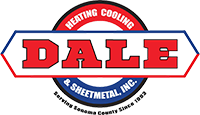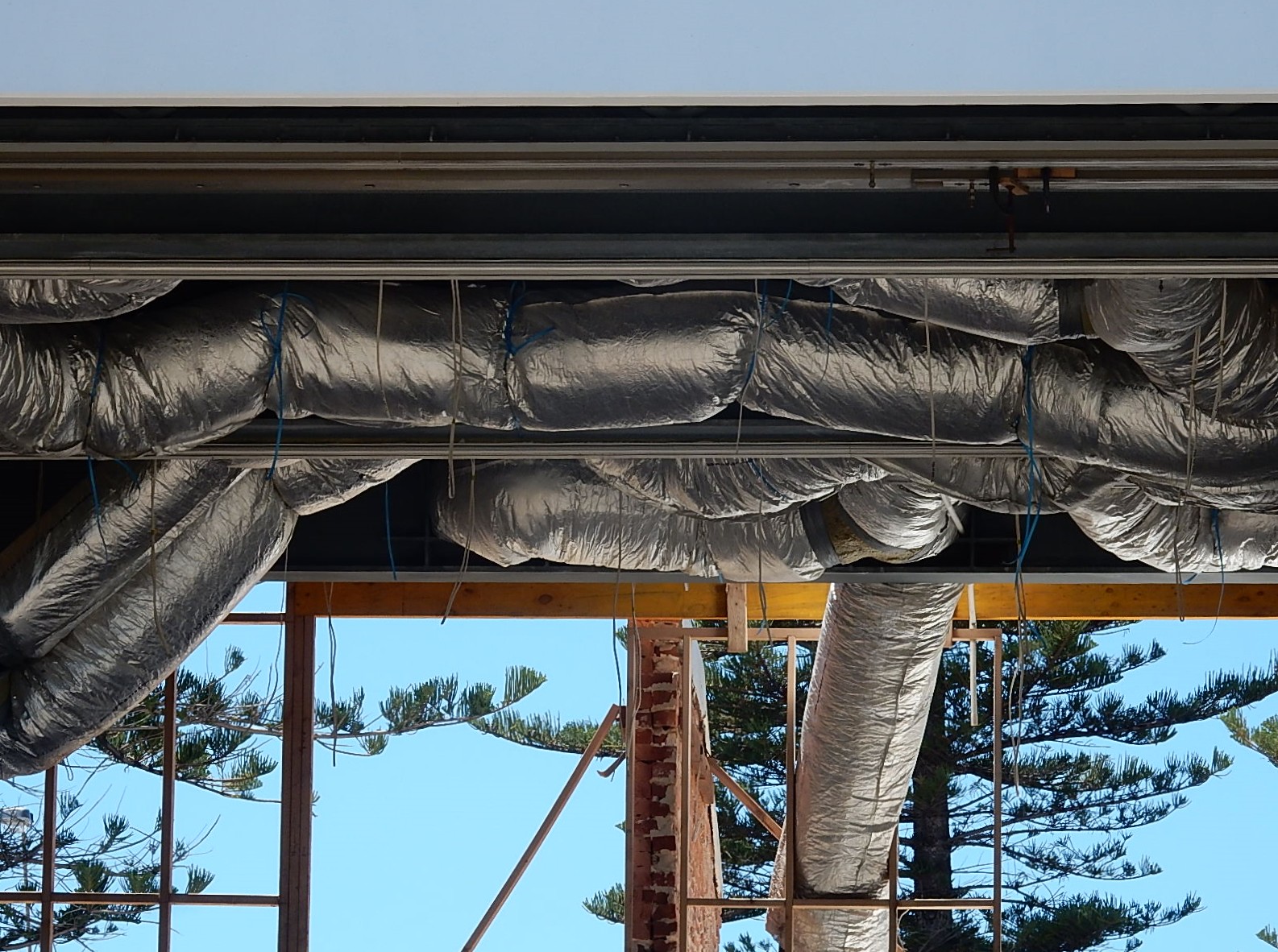When summer temperatures climb in Sonoma County, keeping your large home consistently comfortable can be challenging. Traditional single-zone air conditioning systems often create hot and cold spots throughout spacious homes, leading to family disagreements about temperature settings and increased energy costs. At Dale HCS, we understand that cooling a larger residence requires specialized knowledge and solutions.
| Topic | Key Points |
|---|---|
| Multi-Zone Systems | Customized temperature control for different areas of your home |
| Energy Efficiency | Cool only occupied areas, reducing unnecessary energy consumption |
| Comfort Optimization | Eliminate hot/cold spots common in larger homes |
| System Longevity | Reduced strain on equipment by operating more efficiently |
Understanding Central Air Challenges in Larger Homes
Large homes present unique cooling challenges that standard central A/C systems often struggle to address effectively. In spacious residences, especially those with multiple stories or open floor plans common in Santa Rosa and surrounding areas, single-zone systems typically cool some areas perfectly while leaving others uncomfortably warm. This inconsistency happens because traditional systems deliver the same amount of cooling to all areas, regardless of variables like sun exposure, room usage, or occupancy patterns.
Another common issue in larger homes is the significant temperature difference between floors. Heat naturally rises, making upper levels warmer than lower ones. In two-story homes throughout Sonoma County, we often see temperature variations of 5-10 degrees between floors when using conventional central air systems. This leads to a common household dilemma: setting the thermostat low enough to cool upstairs rooms makes downstairs uncomfortably cold, while a comfortable downstairs setting leaves upstairs bedrooms too warm for restful sleep.
Energy efficiency presents the third major challenge. Cooling an entire large home to the same temperature wastes considerable energy when certain areas remain unoccupied for hours. For instance, cooling unused guest rooms or rarely-used formal dining areas unnecessarily increases your utility bills. According to the U.S. Department of Energy, cooling typically accounts for 12% of household energy expenditures, but this percentage rises significantly in larger homes with inefficient cooling strategies.
Multi-Zone Central AC: The Solution for Spacious Living
Multi-zone central air conditioning systems resolve these challenges by dividing your home into distinct temperature zones, each controlled by its own thermostat. Unlike traditional systems that treat your entire home as a single space, zoned systems allow customized temperature settings throughout different areas. This approach transforms how your family experiences indoor comfort, especially during Santa Rosa’s warmer months.
The core components of a multi-zone system include:
- A central air conditioning unit sized appropriately for your total square footage
- Multiple thermostats placed strategically throughout your home
- Motorized dampers installed within your ductwork to control airflow to different zones
- A central control panel that coordinates between thermostats and dampers
- Optional smart home integration for remote control and programming
When designing a zoned system for large homes, we typically recommend creating zones based on natural divisions in your living space. Common configurations include separating upstairs and downstairs, creating distinct zones for bedroom wings versus common areas, or designating rarely-used spaces as their own zone. These thoughtful divisions ensure that your cooling system delivers comfort precisely where and when it’s needed, maximizing both comfort and efficiency.
Benefits Beyond Basic Comfort
While enhanced comfort is the most immediately noticeable advantage of multi-zone central air for large homes, the benefits extend well beyond simply maintaining pleasant temperatures. For many Sonoma County homeowners, the energy savings alone justify the investment. By cooling only occupied zones to your preferred temperature, you can reduce cooling costs by 20-30% compared to conventional single-zone systems, according to industry performance data.
- Personalized comfort preferences for different family members, reducing thermostat disputes
- Extended equipment lifespan due to reduced runtime and system strain
- Improved indoor air quality when paired with appropriate air filtration systems
- Enhanced resale value, as energy-efficient HVAC systems increasingly attract homebuyers
- Quieter operation since the system doesn’t need to run at full capacity constantly
For families with members who have different temperature preferences or health considerations, zoned cooling provides invaluable flexibility. Parents with young children can maintain cooler sleeping areas for napping infants while conserving energy in less-used spaces. Similarly, family members with respiratory conditions like asthma might benefit from cooler, more consistently filtered air in their bedrooms, which is much more achievable with a zoned approach to central air conditioning.
Installation and Implementation Considerations
Converting your existing central air system to a multi-zone configuration or installing a new zoned system requires careful planning and professional expertise. The process begins with a comprehensive assessment of your home’s layout, existing ductwork, insulation quality, and your family’s specific comfort needs. In our experience serving Santa Rosa homes, proper sizing and zone planning make all the difference in system performance.
For homes with existing central air, retrofitting to a zoned system typically involves installing dampers in strategic ductwork locations, adding multiple thermostats, and integrating a control system. The complexity of this retrofit depends largely on your existing ductwork accessibility and configuration. In some cases, ductwork modifications may be necessary to achieve optimal zone separation.
“Properly sized equipment is the foundation of an effective multi-zone system. Oversized units cool too quickly, causing short-cycling and humidity control problems, while undersized equipment struggles to maintain comfort on the hottest days.” – ASHRAE (American Society of Heating, Refrigerating and Air-Conditioning Engineers)
For new construction or complete system replacements, you have additional options to consider, including variable-speed air handlers and multi-stage compressors that complement zoned systems exceptionally well. These advanced components can modulate their output based on demand, further enhancing efficiency and comfort. While they represent a higher initial investment, they typically deliver superior performance, especially in our Northern California climate with its significant day-to-night temperature variations.
Maintenance for Long-Term Performance
Like any central air system, multi-zone configurations require regular maintenance to ensure optimal performance and longevity. However, zoned systems have additional components that benefit from professional attention. Regular HVAC maintenance for multi-zone systems should include inspection and testing of zone dampers, calibration of multiple thermostats, and verification that the zoning control panel is functioning correctly.
We recommend scheduling professional maintenance at least twice yearly—typically in spring before cooling season begins and in fall as heating season approaches. These regular check-ups help identify potential issues before they escalate into system failures or comfort problems. Additionally, between professional visits, homeowners should perform basic maintenance like regular filter changes and keeping outdoor condenser units clear of debris.
With proper care, multi-zone central air systems typically provide 15-20 years of reliable service, making them an excellent long-term investment in your family’s comfort and your home’s value.
Is Multi-Zone Central AC Right for Your Large Home?
Multi-zone central air conditioning systems offer compelling advantages for larger homes, but they’re not automatically the right choice for every residence. The ideal candidates for zoned systems typically include two-story homes, houses with large open areas alongside smaller rooms, homes with finished attics or basements, and properties with rooms that receive significantly different sun exposure throughout the day—all common scenarios in Sonoma County homes.
When evaluating whether a multi-zone system makes sense for your home, consider factors beyond square footage alone. Review your current comfort challenges, analyze your energy bills during cooling season, and think about how your family uses different spaces throughout your home. If you’re experiencing significant temperature inconsistencies or if certain areas are rarely used but still being cooled, a zoned approach likely offers substantial benefits.
For many local homeowners, the decision ultimately comes down to balancing initial investment against long-term benefits in comfort, energy savings, and system longevity. While multi-zone systems typically cost 20-30% more than comparable single-zone installations, the enhanced comfort and energy efficiency often justify this premium, especially in larger homes where cooling demands are significant during our warm seasons.
Multi-Zone Systems
Customized temperature control for different areas, enhancing comfort in large homes.
Energy Efficiency
Heat only occupied areas, reducing energy consumption and saving costs.
Temperature Consistency
Eliminates hot and cold spots in larger homes, ensuring uniform comfort.
Pro Installation
Requires skilled assessment and installation for optimal system performance and longevity.
Taking the Next Step Toward Whole-Home Comfort
Achieving consistent comfort throughout your large home doesn’t happen by chance—it requires thoughtful system design, professional installation, and ongoing maintenance. As your neighbors here in Santa Rosa, we understand the unique cooling challenges that Sonoma County homeowners face, from managing afternoon heat in west-facing rooms to ensuring comfortable sleeping temperatures in upstairs bedrooms.
Whether you’re building a new home, replacing an aging system, or looking to enhance your current central air setup with zoning capabilities, a professional assessment provides the clarity needed to make informed decisions. Our experienced technicians can evaluate your home’s specific needs and recommend appropriate solutions that balance performance with value.
For more information about multi-zone central air options for your large home, or to schedule a consultation to discuss your specific comfort challenges, contact our team of local HVAC professionals. As a family-owned business serving Sonoma County for years, we’re committed to helping your family enjoy the perfect indoor environment, regardless of your home’s size or configuration.

